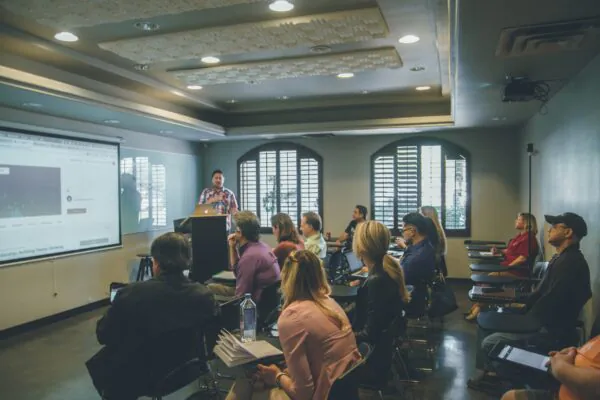As Australia emerges from the long tail of the COVID-19 pandemic and its associated economic crisis, the fault lines in our economy resulting from a decade of mismanagement and neglect have been exposed.
However, long after the lockdown ended and the economy ‘snapped back’ to life, the enduring scarring effects of the labour market contraction are being intensely felt, particularly by young workers, recently arrived migrants and other recent entrants to the labour market. In particular, the complications of a labour market with generations of slack in the system have been exacerbated by a crisis that pushed our economy to breaking point.
These cracks in the foundation have been driven in large part by a long-underdiagnosed skills deficit that has come to the fore in the aftermath of the pandemic. This deficit has been driven by two main opposing pressures, as too many recent entrants to the labour market are locked into cycles of un- and under-employment in short term, insecure service jobs and at the same time the economy has been plagued by nation-wide skills shortages in crucial industries, across multiple trades, the bourgeoning technology sector and in crucial care work.
Australians are more educated than ever, yet the relationship between education and employment outcomes has been steadily eroded. It is true that until the 1990s, for every additional year of post-secondary schooling that a student completed there was an associated increase in earning capacity. However, this correlation has been weakened consistently over time, and employment and education outcomes have been slowly uncoupling across the intervening decades.
Crucially, one of the driving factors of this uncoupling has been a mismatch in the skills that are being provided. The latest Graduate Outcomes Survey (GOS) shows that approximately one in three of those who did find full time employment after graduation were ‘working in a job that did not allow them to fully use their skills or education’. Two thirds of those respondents listed labour market factors as the reason for this mismatch.
While professional, white-collar graduates in Medicine, Pharmacy and Engineering all have a full-time employment rate of over 80%, crucial skills shortage areas like Nursing (74.2%), Health Services and Support (72.5%), Computing and Information Systems (67.9%) have all seen graduate employment fall over the past five years. Indeed, the Tech Council of Australia found that while the demand for digital skills has been growing at an almost exponential rate, the number of people entering into training is grossly inadequate and we face a demand for 1.2 million tech workers before 2030.
However the mismatch doesn’t just exist for those with a university education, as we are experiencing nationwide shortages of trade qualified skills across the metal and electrical trades. Yet, as the recently released Jobs and Skills Summit Issues Paper notes, “of the government-funded VET students who completed their qualification in 2020, only 60 per cent had improved their employment status after their training…[additionally] 42 per cent of technician and trade occupations are currently facing a skills shortage compared to 19 per cent for all assessed occupations”.
Crucially, while the government has been collecting and collating the information on skills shortages at a regional, state and national level for decades, this information has not been utilised within the employment services system or been incorporated into the careers education program that school students encounter and utilise to plan for future careers.
As a result, we have created a situation where we have nationwide skills and labour shortages in multiple trades, midwifery and across the IT professions at the same time as our country produces record numbers of law graduates with some of the lowest employment outcomes of recent years.
However, not all is lost.
There is significant capacity for the government to play a more active coordination role within the skills and training system. As the Australian Government moves to hold a Jobs and Skills Summit that will set the economic agenda for the years to come, we are presented with a unique opportunity to reorient our economy towards inclusivity, security and fairness.
Many of our labour market institutions are ill equipped to handle the challenges that such a reorientation presents us with, and as such, are no longer fit for purpose. However, this creates a unique opportunity to re-examine our economy with fresh eyes without the constraint of orthodoxy and out-dated economic theory. We must view the crisis and its aftermath as an opportunity to challenge the orthodoxies and shibboleths of our political economy, and build a modern, innovative and inclusive economy.
By linking skills shortages to unemployment, skills training programs offer the best value for money investment in recovery and will ensure that young workers are given the opportunity to move into new careers without financial barriers.
Shirley Jackson in the Director of The Centre for New Industry, a Per Capita research centre dedicated to economic diversification, decarbonisation and democratisation.

